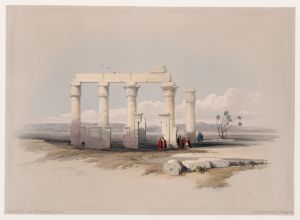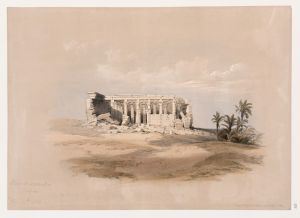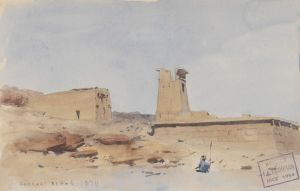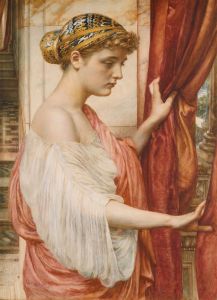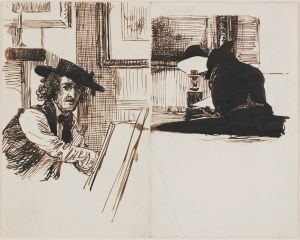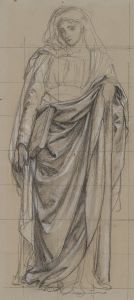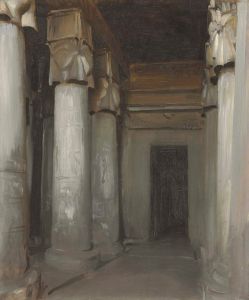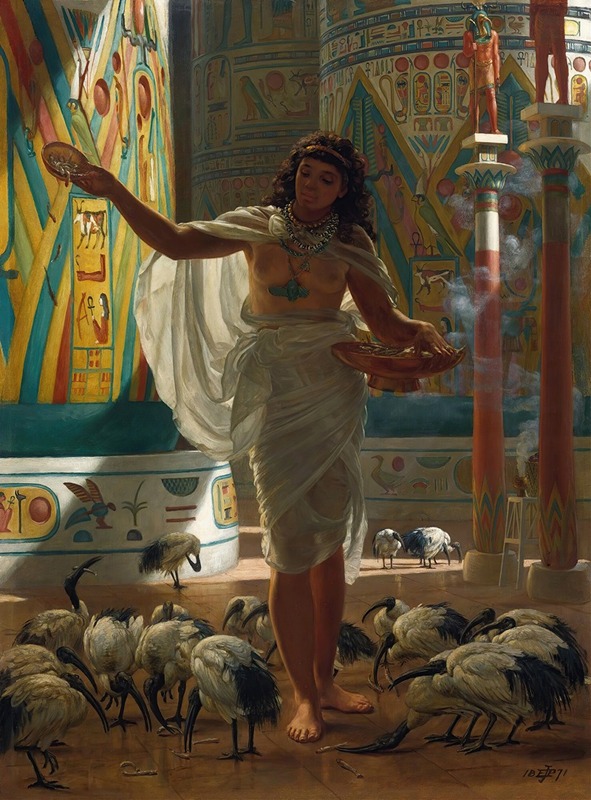
Feeding The Sacred Ibis In The Halls Of Karnac
A hand-painted replica of Edward John Poynter’s masterpiece Feeding The Sacred Ibis In The Halls Of Karnac, meticulously crafted by professional artists to capture the true essence of the original. Each piece is created with museum-quality canvas and rare mineral pigments, carefully painted by experienced artists with delicate brushstrokes and rich, layered colors to perfectly recreate the texture of the original artwork. Unlike machine-printed reproductions, this hand-painted version brings the painting to life, infused with the artist’s emotions and skill in every stroke. Whether for personal collection or home decoration, it instantly elevates the artistic atmosphere of any space.
"Feeding The Sacred Ibis In The Halls Of Karnac" is a painting by Edward John Poynter, an English painter and designer who was prominent in the late 19th and early 20th centuries. Poynter was known for his historical and classical subjects, often drawing inspiration from ancient civilizations and their artistic traditions.
The painting, created in 1866, depicts a scene set in the grand halls of the Karnak Temple complex in Luxor, Egypt. The Karnak Temple is one of the largest religious buildings ever constructed, dedicated primarily to the Theban triad of Amun, Mut, and Khonsu. It was a significant site in ancient Egyptian religion and culture, known for its massive columns, intricate hieroglyphs, and monumental architecture.
In "Feeding The Sacred Ibis In The Halls Of Karnac," Poynter captures a moment where priests or attendants are feeding sacred ibises, birds that were venerated in ancient Egypt. The ibis was associated with Thoth, the god of wisdom, writing, and knowledge. Thoth was often depicted as an ibis or a man with the head of an ibis. The reverence for the ibis is evident in the care and attention given to the birds in the painting.
Poynter's work is characterized by its meticulous attention to detail and historical accuracy. He was known to conduct extensive research to ensure that his depictions of ancient settings were as accurate as possible. In this painting, the architectural elements of the Karnak Temple, including the towering columns and the hieroglyphic inscriptions, are rendered with precision. The use of light and shadow in the painting adds depth and realism to the scene, highlighting the grandeur of the temple and the solemnity of the ritual being performed.
The painting reflects the Victorian fascination with ancient Egypt, a period when archaeological discoveries were bringing the wonders of the ancient world to the attention of the public in Europe. Poynter's work contributed to this interest by providing a visual representation of ancient Egyptian culture and religious practices.
Edward John Poynter was a significant figure in the art world of his time. He held several prestigious positions, including the presidency of the Royal Academy of Arts from 1896 to 1918. His contributions to art and his dedication to historical accuracy have left a lasting legacy.
"Feeding The Sacred Ibis In The Halls Of Karnac" remains an important example of Poynter's work, showcasing his skill in combining historical research with artistic creativity to bring the past to life. The painting is a testament to the enduring fascination with ancient Egypt and the meticulous craftsmanship of one of the Victorian era's most respected artists.





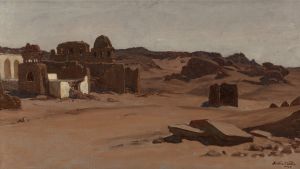
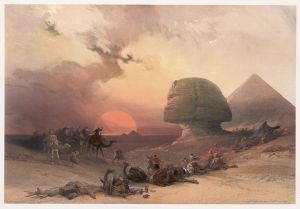
![Front elevation of the Great Temple of Aboosimble [sic]. Nubia.](/imgs/217485/s/david-roberts-front-elevation-of-the-great-temple-of-aboosimble-sic-nubia-c5cdea0a.jpg)
